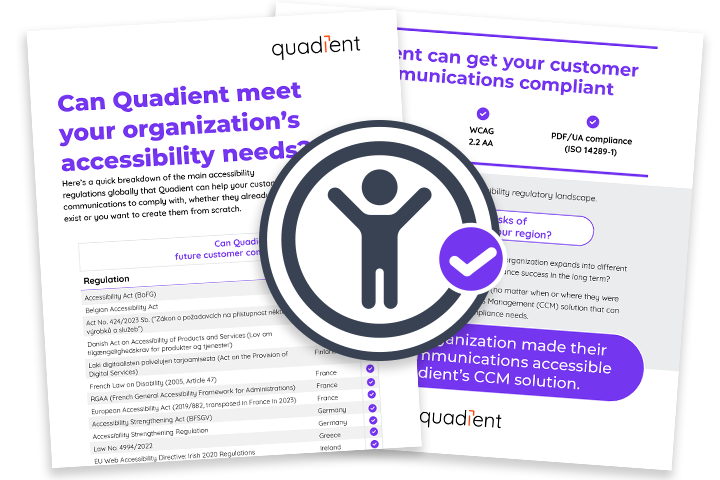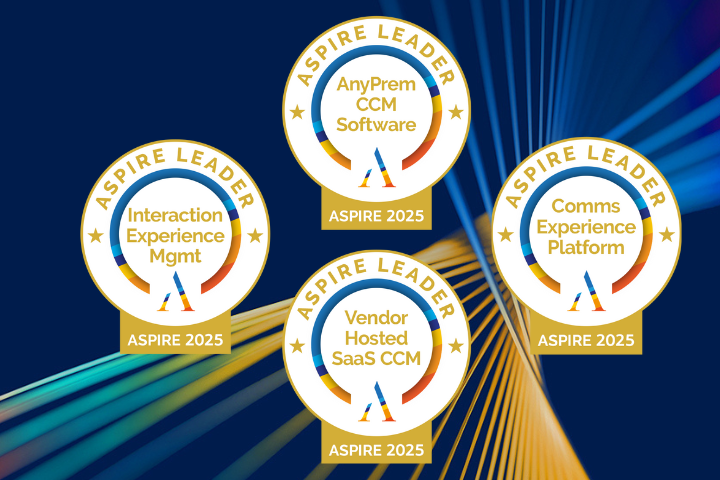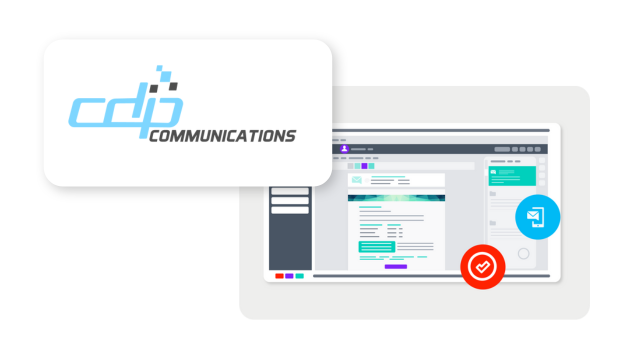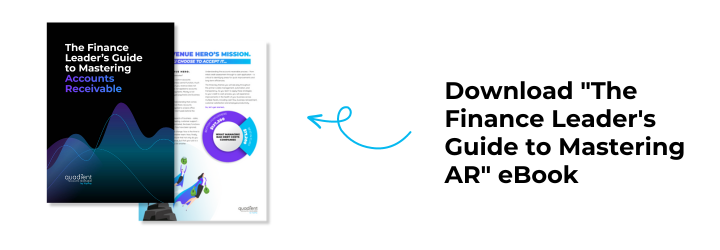Introduction
Since business-to-business (B2B) transactions typically involve larger sums of money than business-to-consumer (B2C) transactions, the majority of B2B payments are made on credit. With sales made on credit, there is always the risk of customers defaulting on payments, resulting in financial losses for the business. This issue can be alleviated by implementing a B2B credit management system. B2B credit management systems use automation to streamline credit management processes, accurately assess credit risk, and ensure on-time payments. In this article, we will discuss the benefits of adopting a B2B credit management system and how it can help businesses expand their customer base while minimizing exposure to risk.
What are B2B credit management systems?
B2B accounts receivable teams utilize B2B credit management to collect payments from companies. Typical B2B credit management systems include:
- Developing a credit policy
- Assessing credit risk
- Processing credit applications
- Accepting payments for purchases made on credit
- Controlling cash flow
- Managing accounts in default
Implementing a reliable credit and collection management system is critical to your company’s success.
Featured Resource: Finance Leader's Guide to Mastering AR
Benefits of adopting a credit management system
Credit management systems can provide several benefits to businesses, including:
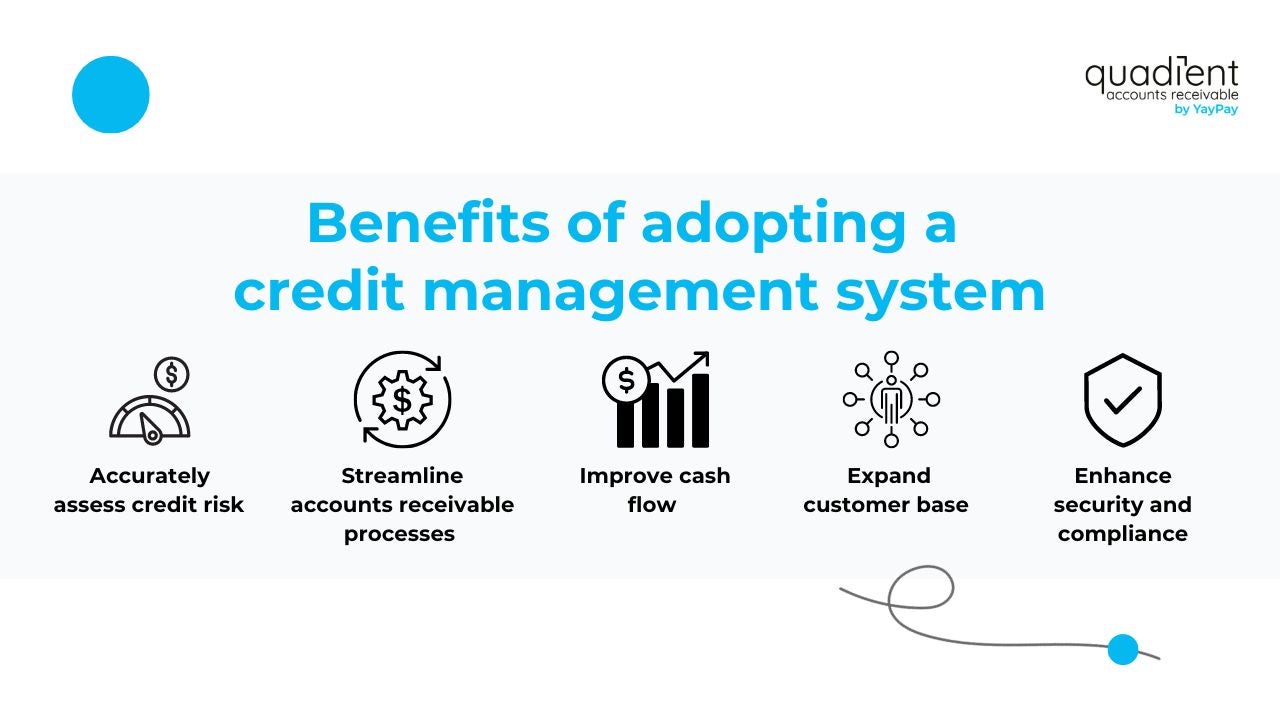
1. Accurately assess credit risk
Assessing your customer’s creditworthiness is the first step in effective B2B credit management. In a manual AR environment, this process is time-consuming and inconsistent. It’s also not uncommon for things to be overlooked, resulting in bad debt and write-offs.
B2B credit management systems automate this process, ensuring that credit decisions are objective and consistent. These systems use credit scoring models and other data analysis tools to evaluate creditworthiness quickly and accurately.
Quadient AR’s Advanced Credit module eliminates the need to run external credit checks. It enables you to leverage intelligent, inbuilt credit scoring. The module’s customer credit scorecards enable you to raise or lower limits according to buyer profiles.
2.Streamline accounts receivable processes
B2B credit management systems automate accounts receivable processes, significantly reducing the time and effort required to manage invoices, payments, and collections. They also make it simple to analyze performance using key metrics and create custom reports to drive better business decisions.
Automatically send invoices and reminders, track payments, and reconcile accounts with a few clicks. Automation streamlines the end-to-end process and ensures timely payments.
3. Improve cash flow
By setting and enforcing credit limits, monitoring payment terms, and managing delinquent accounts, B2B credit management systems help businesses improve cash flow. The system can help businesses manage late payments and delinquent accounts by sending reminders and alerts and initiating collections processes when necessary.
4. Expand customer base
Expanding your customer base is critical for business growth. A B2B credit management system can help you reach new customers and develop comprehensive credit policies for approving more customers while minimizing risk exposure.
5. Enhance security and compliance
Credit management systems provide robust security features to protect sensitive financial data, ensure compliance with industry regulations, and reduce the risk of fraud or unauthorized access.
Overall, credit management systems can help businesses reduce financial risks, improve operational efficiency, and enhance customer relationships, resulting in long-term growth and profitability.
Four key components of an effective credit management strategy
1. Know your customer
Like any good relationship, how much you know about your partner matters. This is especially true when it comes to managing money. When a customer requests a new line of credit or an extension of a current line, it helps to have more than just their most recent Dun & Bradstreet credit score on hand. Before extending credit terms, get to know your customers and their payment practices to ensure that you only do business with businesses that will pay you.
2. Meet your customer's needs to mitigate credit risk
Use the valuable information you have on your customers to be flexible in how you work with them. You understand their business and their payment history, and you know how much flexibility you have in your credit policies to help your customers meet their needs. Offering a customized plan helps you mitigate risk to your business while still providing your customers with the opportunity to expand their business with you as a reliable and trusted partner.
3. The need for speed
Customers like fast and efficient interactions. They’re busy running their businesses, and any time spent not driving revenue is time that’s costing them money. The AR process is often one of the first touchpoints a new customer has with your brand. Ensuring a fast and friction-free customer onboarding process builds trust with your customer. Trust builds loyalty.
4. Transparency
Transparency in credit management enables businesses to build strong relationships with their customers, as both parties have a shared understanding of the financial position of the customer. Transparency results in accurate forecasting, informed decision-making, and a more efficient payment collection process, ultimately leading to increased profitability and improved customer satisfaction.
Conclusion
As we’ve covered in this article, adopting a B2B credit management system can provide significant benefits to businesses. It can accurately assess credit risk, streamline accounts receivable processes, improve cash flow, expand your customer base, and enhance security and compliance. To develop an effective credit management strategy, businesses should know their customers, be flexible to meet their needs, provide efficient interactions, and prioritize transparency. By adopting these practices, businesses can reduce financial risks, improve operational efficiency, and ultimately achieve long-term growth and profitability.




